| Non-Erodible Mud Plaster With Bitumen | |||
|---|---|---|---|
| System Components | Initial Cost Structure | ||
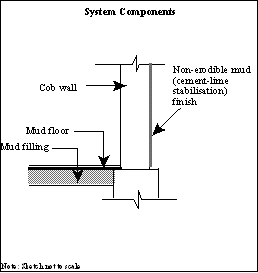
|
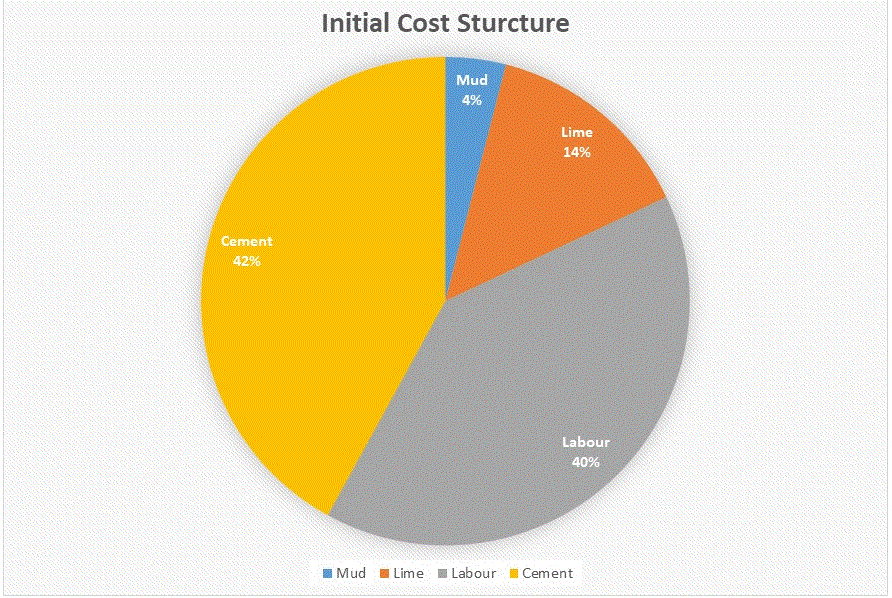
|
||
| Critical Factors | Tools Used | ||
|
1. Proportion of mud and bitumen 2. Mixing of mud 3. Finishing 4. Availability of bitumen |
1. Spade 2. Pan 3. Thread 4. Basket |
||
| DO'S | DON'T'S | ||
|
1. Mud should be thoroughly mixed with rice husk 2. For every 0.035cum of soil add 2 kg of cut back bitumen 3. Mud wall should be plain and free from cracks before applying the mortar |
1. Plaster should not be applied over wet masonry 2. Rice husk should not be added in excess 3. A second finish should not be applied immediately after the first | ||
Construction Process |
|||
Take measured quantity of rice husk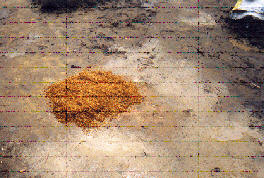 
|
Add mud to the collected rice husk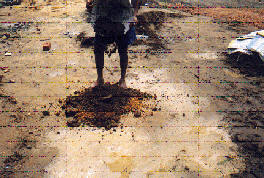 
|
Add bitumen to the mud mix and knead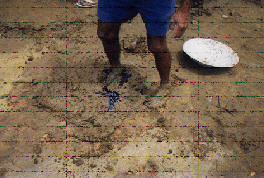 
|
Knead thoroughly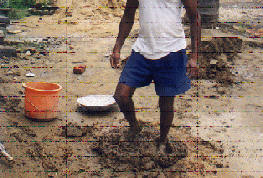 
|
Collect the prepared mud mortar into pans for plastering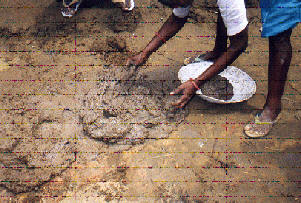 
|
Sprinkle water over the wall surface and apply mud plaster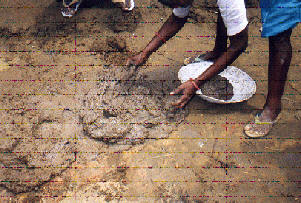 
|
Plaster the outer wall surface which is exposed to rain water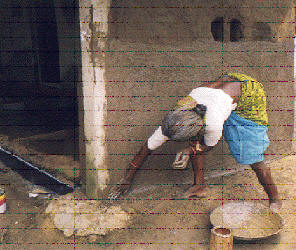 
|
Allow the plaster to dry for two days and apply cow dung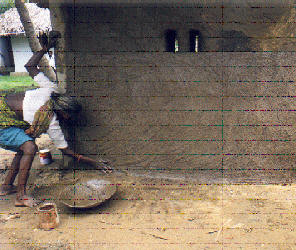
|